I needed more bread, so what’s new? Wanting some whole grain bread though I decided to use some spelt with the whole wheat for some variety. I also wanted some seeds in this bread because I love seeds so decided to add pepitas and sunflower seeds at 10% each.
As is my custom, I use the weaker flour in the tangzhong since preparing the tangzhong denatures the protein so the gluten that that portion of the grain doesn’t contribute to the gluten of the dough. However, the gelatinization of the starches that occurs does help with dough strength. If I use a lot of a weaker grain, more than the 20% needed for the tangzhong, then I will use that in the levain.
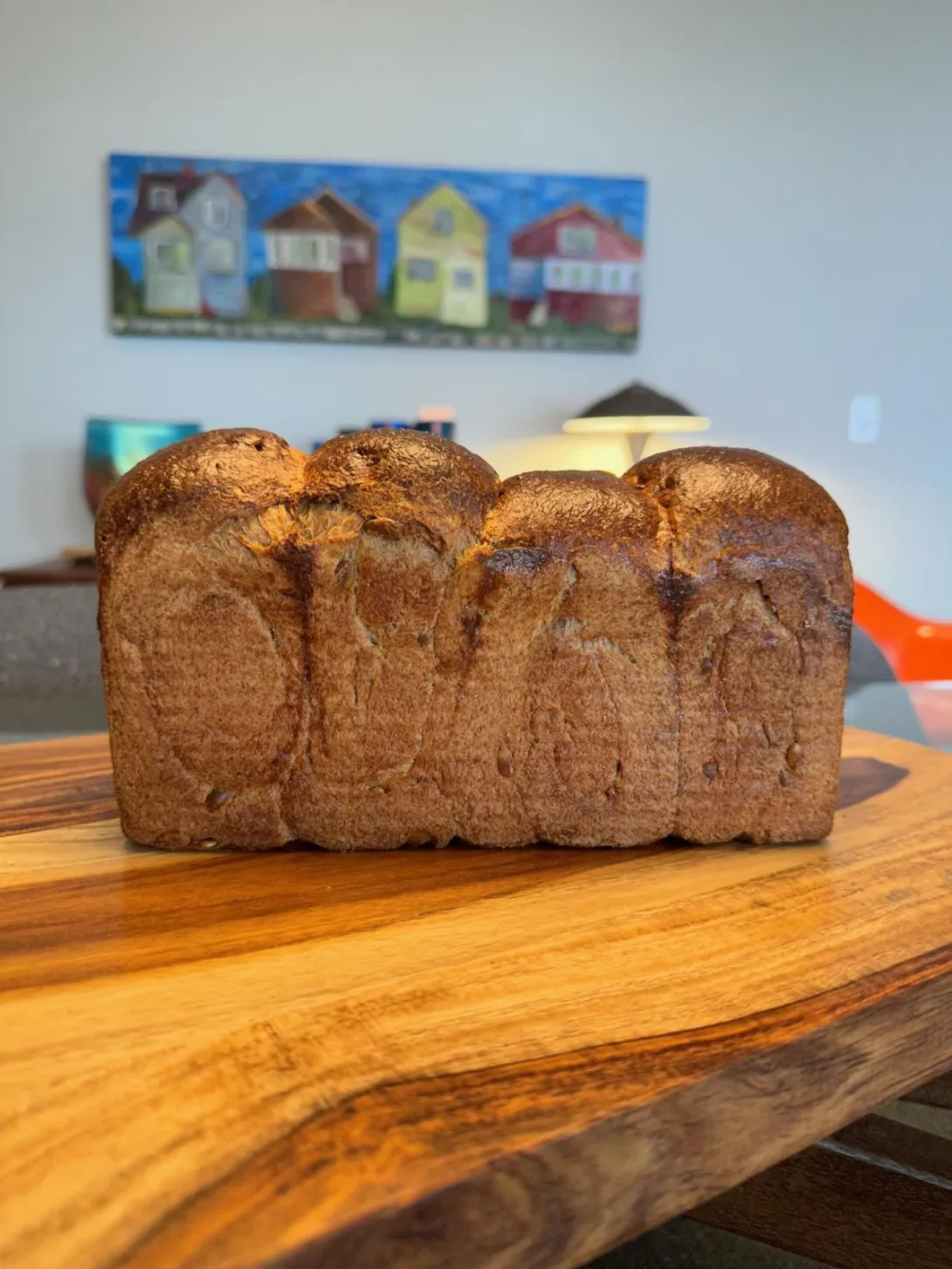
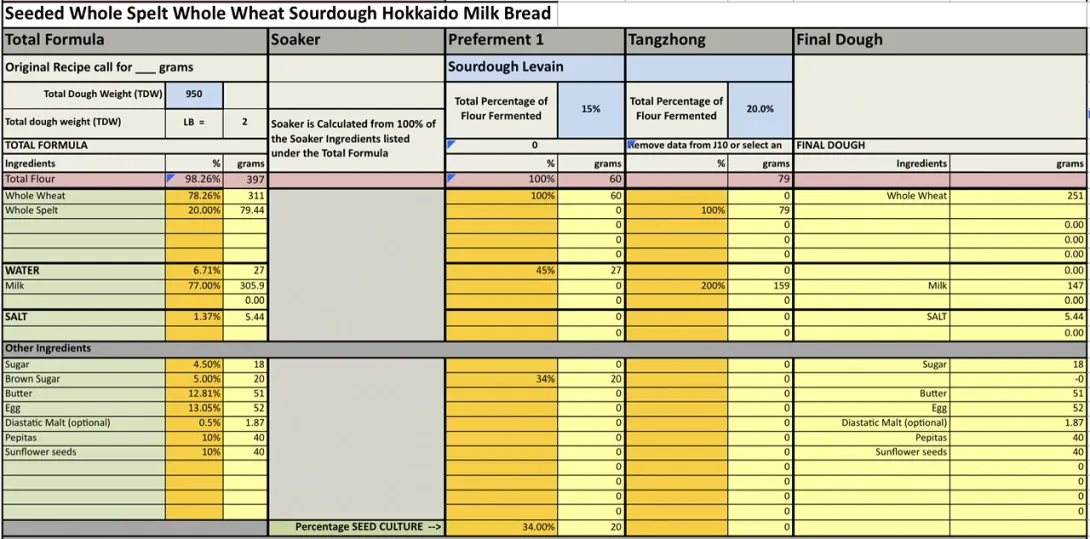
For one 9x4x4” Pullman pan loaf.
Instructions
Levain
Mix the levain ingredients in a jar or pyrex container with space for at least 300% growth.
Press down with your knuckles or silicone spatula to create a uniform surface and to push out air.
At a temperature of 76-78ºF, it typically takes up to 10-12 hours for this sweet stiff levain to be at peak. For my starter I typically see 3-3.5 times increase in size at peak. The levain will smell sweet with only a mild tang.
Tangzhong
In a sauce pan set on medium heat, stir the milk and whole wheat flour until blended. Then cook for several minutes until well thickened, stirring regularly with a spoon or heat-resistant spatula. Let cool in the pan or, for faster results, in a new bowl. Theoretically it should reach 65ºC (149ºF) but I don’t find I need to measure the temperature as the tangzhong gelatinizes at this temperature. You can prepare this the night before and refrigerate it, ensure that it is covered to prevent it from drying out.
If you plan on using a stand mixer to mix this dough, set up a Bain Marie and use your stand mixer’s bowl to prepare the tangzhong.
Dough
In the bowl of a stand mixer, add the milk (consider holding back 10 g of milk and adding later if this is the first time you’re making this), egg, tangzhong, salt, sugar and levain. Mix and then break up the levain into many smaller pieces. Next add the flours. I like to use my spatula to mix until there aren’t many dry areas. Allow the flour to hydrate (fermentolyse) for 20-30 minutes. Mix on low speed and then medium speed until moderate gluten development this may take 5-10 mins. You may want to scrape the sides of the bowl during the first 5 minutes of mixing. Next add room temperature butter one pat at a time. The dough may come apart, be patient, continue to mix until it comes together before adding in more butter. Again, knead until well incorporated. You will want to check gluten development by windowpane during this time and stop mixing when you get a good windowpane. You should be able to pull a good windowpane, not quite as good as a white flour because the bran will interrupt the windowpane somewhat. Add the seeds and mix until well distributed.
On the counter, shape the dough into a tight ball, cover in the bowl and ferment for 2 - 4 hours at 82ºF. There should be some rise visible at this stage.
You can next place the dough into the fridge to chill the dough for about 1.5 hours, this makes rolling the dough easier to shape. Remember, if you do so the final proof will take longer. Alternatively, you can do a cold retard in the fridge overnight, however, you may find that this increases the tang in your bread.
Prepare your pans by greasing them with butter or line with parchment paper.
Lightly oil the top of the dough. Scrape the dough out onto a clean counter top and divide it into four. I like to weigh them to have equal sized lobes. Shape each tightly into a boule, allow to rest 5 mins. Using an oiled rolling pin roll each ball out and then letterfold. Turn 90* and using a rolling pin roll each out to at least 8”. Letterfold again from the sides so you have a long narrow dough. Then using a rolling pin, roll flatter but keeping the dough relatively narrow. The reason to do this extra letterfold is that the shorter fatter rolls when placed in the pan will not touch the sides of the pan. This allows the swirled ends to rise during final proof, this is only done for appearance sake and is not necessary. Next roll each into a tight roll with some tension. Arrange the rolls of dough inside your lined pan alternating the direction of the swirls. This should allow a greater rise during proof and in the oven.
Cover and let proof for 4-6 hours at a warm temperature. I proof at 82°F. You will need longer than 4-6 hours if you chilled your dough for shaping. I proof until the top of the dough comes to within 1 cm of the top edge of the pan.
Preheat the oven to 350F and brush the dough with the egg-milk wash. Just prior to baking brush with the egg-milk wash again.
Bake the loaves for 50 minutes or until the internal temperature is at least 190ºF, rotating as needed to get even browning. Shield your loaf if it gets brown early in the baking process. After 50 mins remove the bread from the pan and bake a further 10 mins by placing the loaf directly in the oven on the rack with the oven turned down to 325ºF.
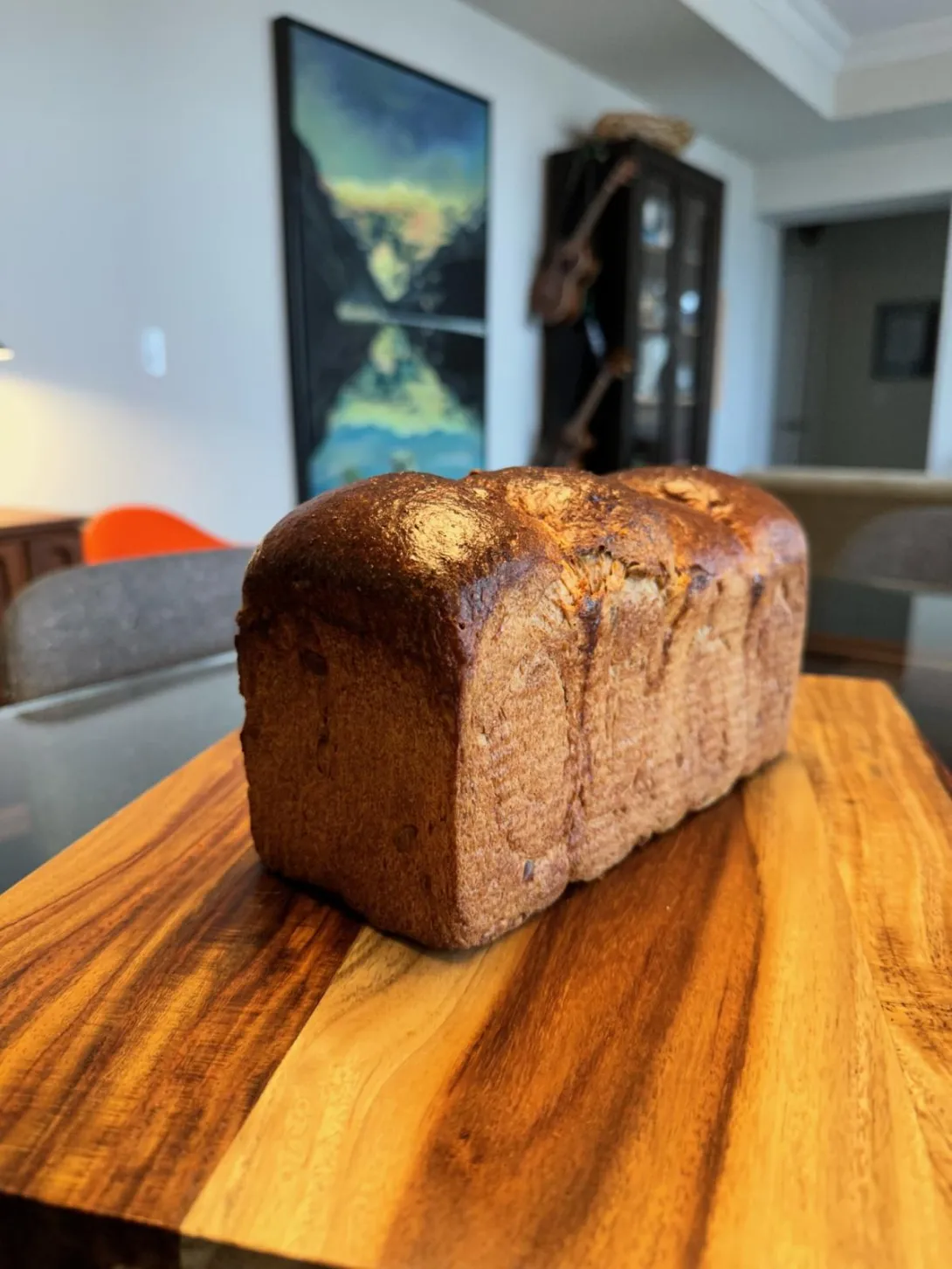
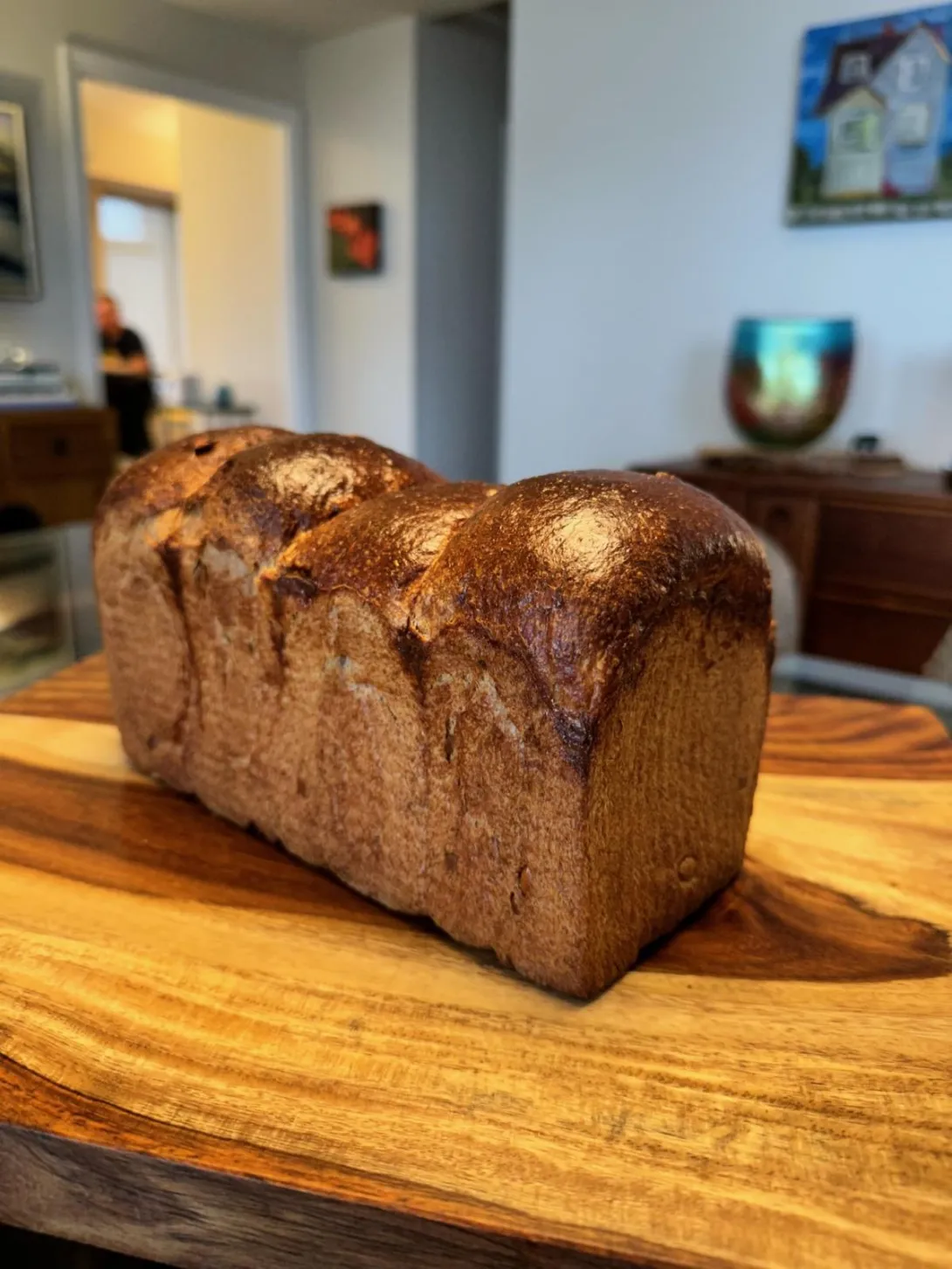
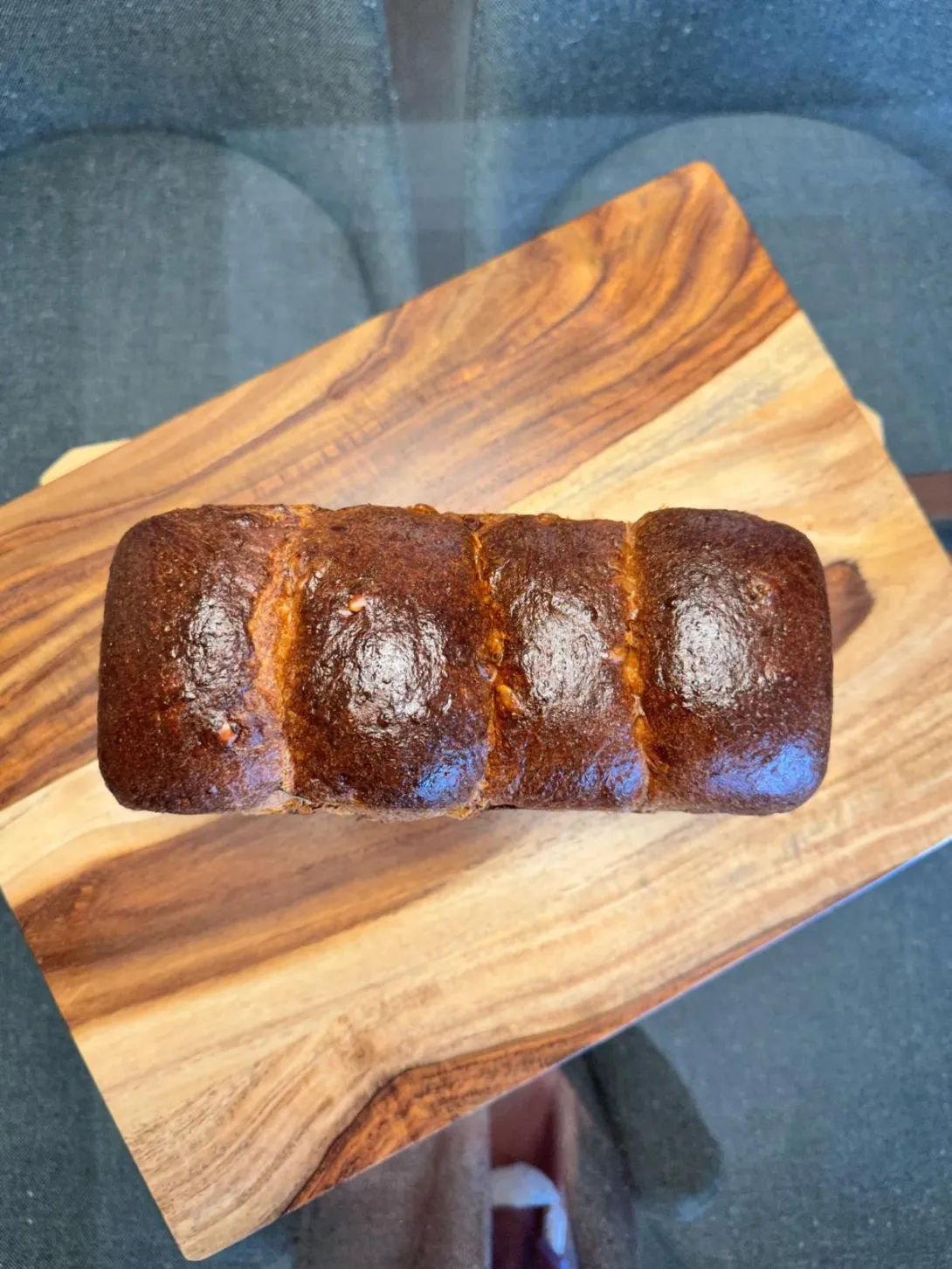
- Benito's Blog
- Log in or register to post comments
“This might be the best bread you’ve ever baked” that was what my partner said aFett trying this bread tonight. I’m not sure I’d agree but it was really good. The nuttiness of the spelt complimented the pepitas and sunflower seeds very well. That crispy buttery crust all around was just yummy. The crumb was so very soft, I would say that increasing the amount of flour used in the tangzhong even at the lower hydration of 200% vs 500% does really contribute a lovely softness to the crumb. At the same time, I no longer seem to need to add VWG to get a great rise from these 100% whole grain loaves.
Benny - this looks and sounds great.
Tony
What an exciting bread. Lovely looking crumb you've got there. It almost seems like it is 50% bread flour, beautiful light colour and open crumb.
What whole wheat flour did you use?
-Jon
Thank you Jon, always kind of you to comment. You're right, the crumb does come across as light and pretty airy for 100% whole grain. I wonder if this is related to the larger percentage flour used for the tangzhong? The whole wheat flour is from a local mill, Howick Community Farmers, it is their organic stoneground flour. The whole spelt is Anita's Organic Mill stoneground spelt. I think I will repeat this bake with walnuts as requested by my partner soon.
Benny
You are the master of this style of bread and this one certainly didn’t disappoint. Your crumb is outstanding and I can only imagine how tasty all the whole grains are.
Best,
Ian
Ian you are always so kind and generous, thank you very much. I agree with you, the flavour of whole grains is wonderful, I’m sure I’m missing out with not milling my own. Maybe someday if we ever move into a place with much more kitchen storage I can have a mill and really experience whole grains.
Benny
Hi,
The crumb you got is so perfect!!
I wanted to try these grains too and with the milk and butter. I did a bit of modifying (I hope it's ok!) since I have never used the methods above, but I do like the loaf and the buttery smell is great! Thanks for all the ideas :)
Baked with clas and Zojirushi, of course.
You must do what you like with your bakes, you do you! Your results look fabulous Jo, I hope you enjoyed the flavours of the Spelt and wheat, they are really complimented by the dairy from the milk and butter. Did you try the seeds as well?
Benny